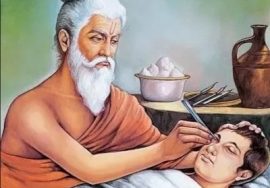
Meditation in Ancient India
Meditation has existed for a long time specially in ancient Indian civilization, where the first evidence found for the practice of meditation was from around more than 1500BC in religious books and art walls in India of people sitting in the meditation position with their eyes half closed [1].
It was a spiritual and religious exercise in India found in most Hindu scriptures,” Dhyana” which is meditation in the ancient Indian language (sanskirt) and in the Hinduism religion, was described as that it’s an exercise for the mind, the word is derived from “dhi”, which in Hindi means an imaginary vision and the concentration [2].
Meditation was practiced in ancient India by many clerics and philosophers, such as Buddha, whose Buddhist religion was based on meditation, and of course it was also practiced by gods of the Hindu religion because it was a main part in their way of worship and it was mentioned in the Hindu texts that it eliminates ignorance and gains knowledge [3].
The ancient Indians also believed that meditation teaches consciousness, which is one of the finest sciences in India and has a direct relationship with the mind.
We all know that meditation in our present time is an important practice for relaxation, get rid of stress, and it also has great importance in stimulating the mind and memory. It is strange that the ancient Indians believed in the same things but without any scientific evidence, only by relying on philosophy and religious books.
References:
[1] https://positivepsychology.com/history-of-meditation/
[2] https://www.doyou.com/dhyana-the-7th-limb-of-yoga-explained-66579/
[3] Dhavamony, Mariasusai (1982). Classical Hinduism. Università Gregoriana Editrice. Pp. 243–244



